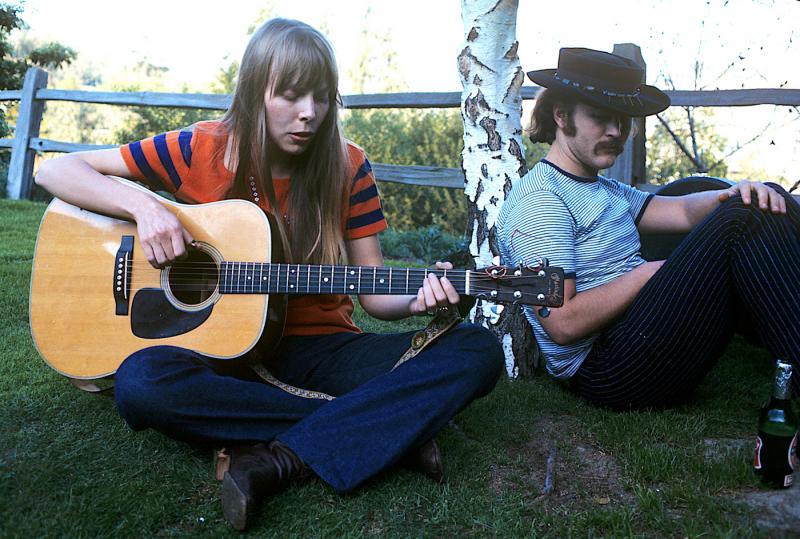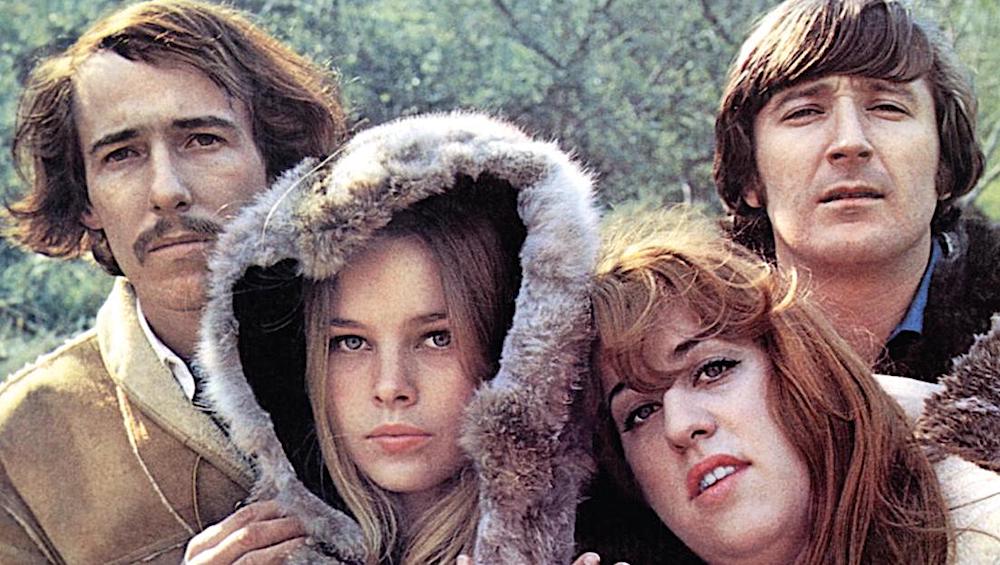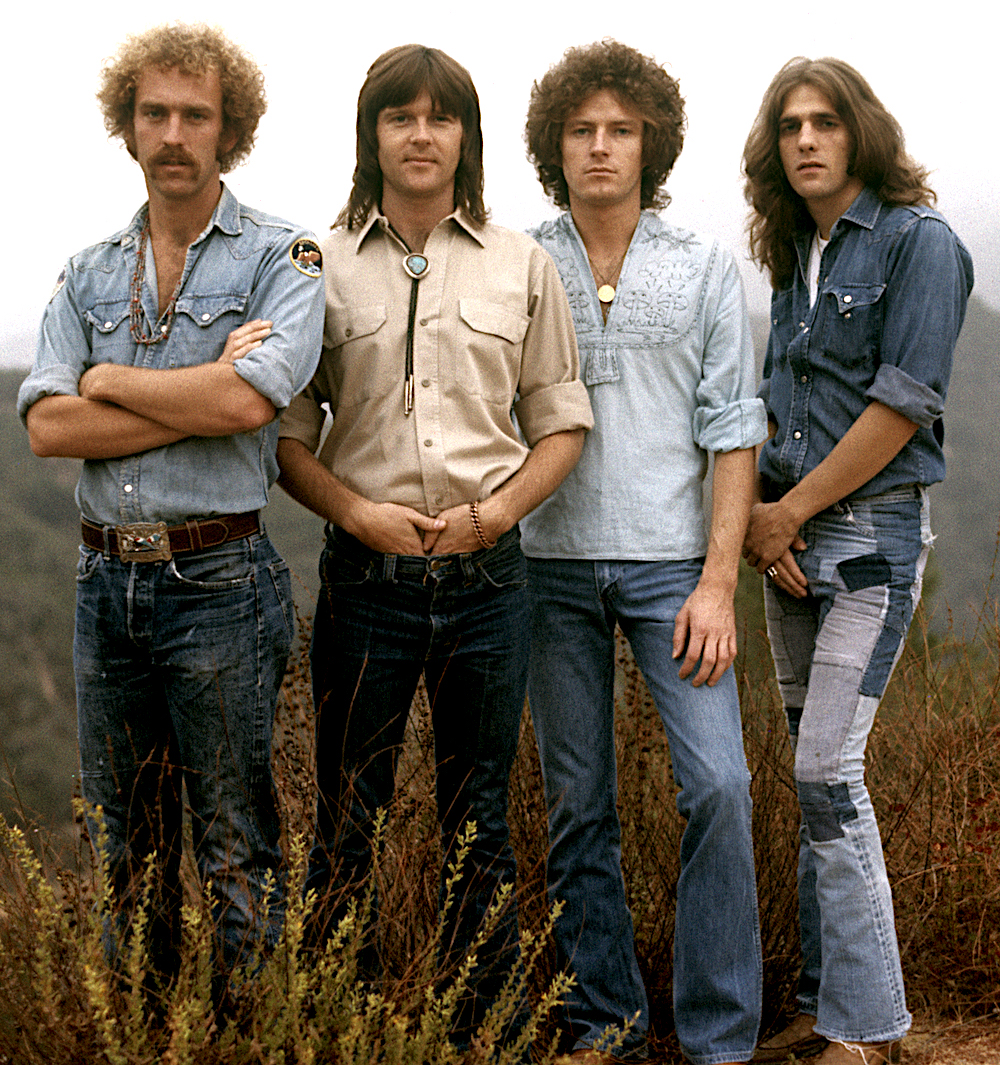Laurel Canyon, Sky Documentaries review - musical bliss in lotus land | reviews, news & interviews
Laurel Canyon, Sky Documentaries review - musical bliss in lotus land
Laurel Canyon, Sky Documentaries review - musical bliss in lotus land
Evocative history of the Los Angeles musical community in the Sixties and Seventies

It was Alison Ellwood who directed 2013’s History of the Eagles, and now she’s at the helm of this new two-parter on Sky Documentaries, telling the story of the Los Angeles music scene from the mid-Sixties
To steal from Wordsworth, “Bliss was it in that dawn to be alive”, since this was a blue-skied, sun-drenched era of creative and personal freedom and musical innovation. Before too much money and drugs of the wrong kind started driving everyone crazy, the musicians enjoyed a life of communal give-and-take, wandering in and out of each other’s homes and indulging in mutual collaborations, both artistic and personal. Music, from back porch acoustic balladry to the sound of bands rehearsing, shimmered in the air of the Hollywood Hills, along with the aromas of pot, eucalyptus and wild flowers. Outside, America itself was undergoing profound changes, which would gradually seep into the music and the musicians (pictured below, the Mamas & the Papas).
 Ellwood’s method here has been to assemble a seamless patchwork of vintage still and moving images, bringing the era to life so vividly that the intervening half-century suddenly seems to melt away, then adding audio commentary from a wide selection of the artists and scene-makers. The party-hosting, ever-networking Cass Elliot, once dubbed “the Gertrude Stein of Laurel Canyon” by Graham Nash, emerges as a crucial catalyst for many a romantic or musical development (there was a great photo from Cass’s house of Eric Clapton studying Joni Mitchell’s open-tuned guitar-playing), while Nash himself is a particularly eloquent commentator on the history of life in the canyon. The recently-deceased Elliot Roberts, manager of Mitchell and CSN, and his business partner David Geffen are given due prominence for their roles in creating new ways of approaching the business of music to accommodate this free-thinking new generation of artists.
Ellwood’s method here has been to assemble a seamless patchwork of vintage still and moving images, bringing the era to life so vividly that the intervening half-century suddenly seems to melt away, then adding audio commentary from a wide selection of the artists and scene-makers. The party-hosting, ever-networking Cass Elliot, once dubbed “the Gertrude Stein of Laurel Canyon” by Graham Nash, emerges as a crucial catalyst for many a romantic or musical development (there was a great photo from Cass’s house of Eric Clapton studying Joni Mitchell’s open-tuned guitar-playing), while Nash himself is a particularly eloquent commentator on the history of life in the canyon. The recently-deceased Elliot Roberts, manager of Mitchell and CSN, and his business partner David Geffen are given due prominence for their roles in creating new ways of approaching the business of music to accommodate this free-thinking new generation of artists.
Interestingly, about the only people who appear on screen as their current selves to narrate parts of the story are photographers Henry Diltz and Nurit Wilde, who photographed everybody in that era. Diltz, originally a musician in the Modern Folk Quartet, had a nice anecdote about how he shot the cover for the first Crosby Stills and Nash album at a decrepit shack in the hills. Then he belatedly realised that he’d shot them as Nash, Stills and Crosby, but when they went back for another go the building had already been bulldozed (pictured below, the original Eagles line-up).
 The musical clips are great, whether it’s the Mamas & the Papas doing “California Dreamin’” at the Monterey Pop Festival in 1967, the Buffalo Springfield playing “Mr Soul” on TV or Jim Morrison’s trance-like delivery of “When the Music’s Over”, but the fascination lies in the little details. Who knew that a young Harrison Ford, then a carpenter, built the music room in Monkee Peter Tork’s house? Love’s guitarist Johnny Echols recalls how his band weren’t happy being on the Elektra label, and tried to get the label to sign The Doors and release Love. Instead, Elektra lavished all their promotional efforts on The Doors while refusing to let Love go. “We shot ourselves in the ass,” Echols laments.
The musical clips are great, whether it’s the Mamas & the Papas doing “California Dreamin’” at the Monterey Pop Festival in 1967, the Buffalo Springfield playing “Mr Soul” on TV or Jim Morrison’s trance-like delivery of “When the Music’s Over”, but the fascination lies in the little details. Who knew that a young Harrison Ford, then a carpenter, built the music room in Monkee Peter Tork’s house? Love’s guitarist Johnny Echols recalls how his band weren’t happy being on the Elektra label, and tried to get the label to sign The Doors and release Love. Instead, Elektra lavished all their promotional efforts on The Doors while refusing to let Love go. “We shot ourselves in the ass,” Echols laments.
Then there are tales of the tangled love-lives of the Mamas & the Papas, with the evidently not very likeable John Phillips happy to entertain countless young women but flying into a rage when his wife Michelle had her own affair with The Byrds’ Gene Clark. He even tried to have her fired from her own band. Even in this supposedly enlightened new era, Nurit Wilde notes that “women were still subservient to men.” Not sure that could be said of Joni Mitchell, whose brief but intense love affair with Graham Nash is wistfully recalled by the latter, but Joni has her own amusing little moment when a TV interviewer asks her who she is. Mitchell, taking this for a profound metaphysical question, responds with a long and thoughtful silence, but all the interviewer wanted her to say was “I’m Joni Mitchell”.
In the second instalment of Laurel Canyon, the skies darken with the appearance of Charles Manson and his psychotic retinue in LA’s garden of delights, while the Altamont festival douses the peace-and-love era in a welter of violence and death. All things must pass, but Ellwood has captured something of the spirit of the age.
rating
Explore topics
Share this article
The future of Arts Journalism
You can stop theartsdesk.com closing!
We urgently need financing to survive. Our fundraising drive has thus far raised £49,000 but we need to reach £100,000 or we will be forced to close. Please contribute here: https://gofund.me/c3f6033d
And if you can forward this information to anyone who might assist, we’d be grateful.

Subscribe to theartsdesk.com
Thank you for continuing to read our work on theartsdesk.com. For unlimited access to every article in its entirety, including our archive of more than 15,000 pieces, we're asking for £5 per month or £40 per year. We feel it's a very good deal, and hope you do too.
To take a subscription now simply click here.
And if you're looking for that extra gift for a friend or family member, why not treat them to a theartsdesk.com gift subscription?
more TV
 The Diplomat, Season 3, Netflix review - Ambassador Kate Wyler becomes America's Second Lady
Soapy transatlantic political drama keeps the Special Relationship alive
The Diplomat, Season 3, Netflix review - Ambassador Kate Wyler becomes America's Second Lady
Soapy transatlantic political drama keeps the Special Relationship alive
 The Perfect Neighbor, Netflix review - Florida found-footage documentary is a harrowing watch
Sundance winner chronicles a death that should have been prevented
The Perfect Neighbor, Netflix review - Florida found-footage documentary is a harrowing watch
Sundance winner chronicles a death that should have been prevented
 Murder Before Evensong, Acorn TV review - death comes to the picturesque village of Champton
The Rev Richard Coles's sleuthing cleric hits the screen
Murder Before Evensong, Acorn TV review - death comes to the picturesque village of Champton
The Rev Richard Coles's sleuthing cleric hits the screen
 Black Rabbit, Netflix review - grime and punishment in New York City
Jude Law and Jason Bateman tread the thin line between love and hate
Black Rabbit, Netflix review - grime and punishment in New York City
Jude Law and Jason Bateman tread the thin line between love and hate
 The Hack, ITV review - plodding anatomy of twin UK scandals
Jack Thorne's skill can't disguise the bagginess of his double-headed material
The Hack, ITV review - plodding anatomy of twin UK scandals
Jack Thorne's skill can't disguise the bagginess of his double-headed material
 Slow Horses, Series 5, Apple TV+ review - terror, trauma and impeccable comic timing
Jackson Lamb's band of MI5 misfits continues to fascinate and amuse
Slow Horses, Series 5, Apple TV+ review - terror, trauma and impeccable comic timing
Jackson Lamb's band of MI5 misfits continues to fascinate and amuse
 Coldwater, ITV1 review - horror and black comedy in the Highlands
Superb cast lights up David Ireland's cunning thriller
Coldwater, ITV1 review - horror and black comedy in the Highlands
Superb cast lights up David Ireland's cunning thriller
 Blu-ray: The Sweeney - Series One
Influential and entertaining 1970s police drama, handsomely restored
Blu-ray: The Sweeney - Series One
Influential and entertaining 1970s police drama, handsomely restored
 I Fought the Law, ITVX review - how an 800-year-old law was challenged and changed
Sheridan Smith's raw performance dominates ITV's new docudrama about injustice
I Fought the Law, ITVX review - how an 800-year-old law was challenged and changed
Sheridan Smith's raw performance dominates ITV's new docudrama about injustice
 The Paper, Sky Max review - a spinoff of the US Office worth waiting 20 years for
Perfectly judged recycling of the original's key elements, with a star turn at its heart
The Paper, Sky Max review - a spinoff of the US Office worth waiting 20 years for
Perfectly judged recycling of the original's key elements, with a star turn at its heart
 The Guest, BBC One review - be careful what you wish for
A terrific Eve Myles stars in addictive Welsh mystery
The Guest, BBC One review - be careful what you wish for
A terrific Eve Myles stars in addictive Welsh mystery
 theartsdesk Q&A: Suranne Jones on 'Hostage', power pants and politics
The star and producer talks about taking on the role of Prime Minister, wearing high heels and living in the public eye
theartsdesk Q&A: Suranne Jones on 'Hostage', power pants and politics
The star and producer talks about taking on the role of Prime Minister, wearing high heels and living in the public eye

Add comment